Table of contents
Beyond the familiar channels, today’s marketers can benefit from the untapped potential of “dark social.” Now, don’t let the name scare you - “dark” in this context has nothing to do with shady online activities or illegality. Rather, it refers to the mysterious, often private ways people share information and promote brands. This happens “in the dark,” beyond trackable social media posts and measurable conversions.
Obviously, this makes tracking rather difficult and complicates ROI calculations. Business-to-Business (B2B) companies can seriously struggle as a result, missing out on essential data plus the important opportunities that naturally come about because of said data. This makes it necessary to create concrete data-driven decisions and plans around dark social.
The focus of this article is to provide insight into the hidden utilities of dark social with real-world examples, as well as practical strategies to guide B2B marketers.
What is Dark Social?
Coined in 2012 by former Atlantic editor Alexis Madrigal and popularized by Chris Walker of Refine Labs, “dark social” refers to private online spaces (messaging apps, emails, texts, etc) where information is shared outside of the public eye. More often than not, it’s here where B2B buyers share valuable information and brand content, naturally driving web traffic and shaping brand reputation.
Dark social is a remarkably powerful tool. However, it’s also one with a unique challenge: traditional attribution software - largely due to a lack of UTM tags or other clear tracking identifiers - often can’t identify precisely when or where this communication occurs.
Such software can’t even determine whether the content shared is paid or truly organic since it is frequently disguised as direct traffic, making it a real challenge to properly credit where buyers’ interest comes from. This difficulty is only increased by the presence of certain privacy policies.
How Can Dark Social Benefit B2B Marketers?
Better sales revenue is indicative of the overall product pipeline performance. Objectively, we can directly attribute the speedy pipeline velocity and improved sales metrics to consistency in buyer intent - something heavily influenced by dark social.
So, while a wily thing to pin down, it’s more than worth it. Businesses equipped with the tools needed to recognize and analyze dark social interactions have a better understanding of consumer behaviour. Data from dark social helps companies better re-strategize and gain that much-needed competitive advantage.
Acknowledging and optimizing content tailored to the preferences and sharing patterns observed in private conversations can help marketers tap into these hidden audiences and leave a compelling impression. Don’t quite see how it all comes together? Here are just a few of the ways dark social benefits marketers.
Dark Social Improves Your Analytics
Google defines “direct traffic” as instances where users manually enter a URL or access a bookmarked site. But in spite of this, approximately 10% of this direct traffic actually originates from dark social. By capturing the purchase intent and habits of those using various dark social channels, companies gain further information on existing and potential audience members. Integrating these with existing analytics provides a better, broader picture of their customer base.
As it turns out, capturing said dark social data also contributes to improved analytics in a rather direct way. This is owed to the fact that monitoring dark social information necessitates the use of more advanced, innovative social tracking tools plus encourages different data collecting methods.
When combined, these two changes supply brands with more granular insights into what, why, and how people interact with their brand. And when B2B marketers have access to this data? Their leads, site traffic, and business decisions get a massive bump.
Dark Social Attracts New Audiences
It should go without saying but word of mouth (or WOM for short) is one of the most effective marketing tactics around. According to a 2021 Nielsen Trust in Advertising study, over 88% of respondents most trust recommendations from people they know, and WOM is estimated to account for 20-50% of all purchasing decisions. Dark social is itself a form of WOM marketing which, if utilized correctly, can help brands reel in fresh audiences.
For starters, it can be spread between friend groups, colleagues, or other close-knit networks, building new relevant audiences that probably wouldn’t have been reached with traditional marketing. Dark social can also help build brand trust and credibility. After all, people will be less wary of companies when their own friends display trust. This increased credibility can then improve engagement, potentially leading to new customers.
Dark Social is a compelling avenue capable of connecting with diverse audiences, fostering overall brand recognition, and increasing awareness. Since everyone engages in dark social marketing without even knowing it (most social is dark social!), there’s a truly incredible base there in which to expand reach.
Dark Social Helps Develop an Understanding of Your Target Audience
Dark social marketing requires next to no monetary investment yet boasts excellent consumer reach and click-backs. Unlike some other tactics, it’s active, engaging, and perhaps most importantly, centered around listening to the customer.
The core of it relies on monitoring (through listening tools, traffic patterns, and beyond) what is shared in more private avenues. This allows companies to gain greater insights into what their target audience values, their product/service preferences, buying behaviors, and their perceived pain points about existing options.
Additionally, dark social can assist companies in identifying what content is considered high-value for their audience. All they have to do is merely pay attention to what is shared as dark social users primarily post or chat about things they find interesting, valuable, or unique. Taking note of that which drives engagement or traffic will naturally enhance audience understanding and enable companies to tailor content strategies to meet their needs.
8 Effective Dark Social B2B Marketing Strategies
Dark social can work wonders, informing brands of what existing customers like or want to see while also offering insight into untapped audiences. But it’s by no means marketing magic. You still need to learn how to make the most of it, particularly in a time where the B2B marketing landscape is seeing rapid changes.
Need some help doing so? Read below for some easy strategies that will make sure you’re getting all the good stuff out of your dark social marketing.
1. Create Demand
Creating organic demand goes beyond merely targeting the 5% of buyers who are actively in the market to purchase products or services. A significant portion of potential revenue is missed by using this approach. To combat this challenge, there is a need to inform the target audience about your brand through diverse marketing methods.
Dark social is the first step. To effectively engage with your audience and educate your ideal customer profile, focus on developing sharable content. Establishing meaningful connections with your potential customers will improve relatability and drive them towards your brand over the competition.
Remember: the goal here is to reach and influence the substantial 95% of potential buyers who aren’t currently in the market for immediate purchases. B2B marketers that overlook the significance of demand creation will always lose out in the end. Competitors will always seize the opportunities you don’t take.
B2B marketers that overlook the significance of demand creation will always lose out in the end. Competitors will always seize the opportunities you don’t take.
Succeeding in this endeavour will require the non-negotiable recruitment of a content production team. These professionals will serve as your persona experts, hired for the sole purpose of crafting content tailored to push the brand’s positive image via various formats, including blogs, videos, podcasts, newsletters, and webinars. They’ll also curate material by collaborating closely with the subject matter experts of your brand and external contributors.
2. Improve Marketing Strategies and Campaign Models
As you target your audience, it’s crucial to develop a comprehensive Go-To-Market (GTM) strategy that encompasses various facets of marketing and sales. To achieve this feat, consider pricing, targets/KPIs, marketing channels, budgets, tech stacks, and resources.
An effective GTM plan provides details for marketing, sales, and the necessary resources to lay the foundation for sustained growth targets and enhance your company’s market presence. It highlights the associated costs and technology stack considerations, too.
In the age of dark social, where traditional attribution methods fall short, a well-thought-out GTM strategy can be a game-changer. It assists you in adapting to the changing landscape and ensures you reach your target audience through both traditional and dark social channels.
3. Post Useful Content
Many businesses still rely on archetypal lead-generation strategies characterized by gated content, marketing-qualified leads (MQLs), and trade shows. However, know that modern marketers won’t get by on this for long! They need to adopt new strategies, one of which involves posting easily accessible and useful content.
In the case where fresh content ideas are not easily accessible, you can effortlessly repurpose your existing content. For instance, you can turn snippets from your podcasts into short-form content for TikTok and LinkedIn posts. You can also increase reach by creating blog posts from data obtained via prerecorded sessions.
Effective product marketing and brand education involve maintaining an intuitive website that elucidates the specific use cases and values your product offers to different customer personas. Additionally, using explainer-style videos, product tours, and other bottom-of-funnel (BOFU) content can help convey the distinct advantages of your product versus others’.
Substantial social proof is vital, as this insinuates that your content consumers are achieving their desired results, consequently building trust and credibility. Both attributes are essential in dark social interactions because - like everything else in life - the human element is paramount.
4. Use Employee Advocacy Strategy
Encouraging employees to post on your business’s behalf is a small marketing step but one that allows you to tap into their existing network of contacts, friends, subscribers, and followers. This approach leverages word-of-mouth marketing, which as established, generates high levels of trust and authenticity.
To implement employee advocacy in dark social, work to foster a sharing culture within your organization. Equip employees with shareable content, and measure the impact on your brand’s reach and awareness. In dark social, personal connections mean everything, and profiting off it ultimately means sharing these spaces with your audience. Having employees advocate for your brand within dark social channels is a natural way to go about this and can give you a significant leg up.
5. Update the Organization of Paid Social Accounts
One of the means to leverage dark social effectively involves revamping the team that handles paid social accounts, transitioning them away from collecting leads and towards creating awareness campaigns. Despite their renowned effectiveness in sales conversion, the lead-centric approach of traditional social accounts has many limitations, such as a lack of strategic content, overemphasis on checklists, and product under-representation in case studies.
To address these challenges, implement a new strategy. Try to create distinct content buckets for awareness and remarketing, each tailored to unique personas with specific objectives. Companies are encouraged to shift their existing mindset and focus more on engagement metrics to assess campaign effectiveness.
Reports should encompass the broadly tracked attributions and any self-attributions acquired through this strategy should be considered as a bonus.
6. Allocate Resources for Content Distribution
An effective dark social campaign relies on one critical, underlying principle: to create content that resonates with your target audience and distribute it strategically. By doing this, you encourage sharing among peers. Establish a clear strategy and framework, categorize various content types accordingly, and define their intentions.
Additionally, it is imperative to maintain agility in your approach. You can’t always predict which content will gain significant traction or warrant high-level distribution! Much of this distribution occurs in dark social channels. Leveraging the industry influence of subject matter experts (SMEs) in content dissemination to a much broader and more engaged audience has been tested to be a sure-fire strategy for success.
7. Foster Good Sales Practices
Companies that engage in good sales practices are more likely to reap the benefits of dark social sales. Note that this includes businesses that are fairly priced and over-deliver on their products or services, not those that trap customers into unsatisfactory subscriptions.
Let’s not forget, unhappy customers tend to share their negative experiences on dark social channels. It’s then not just immoral but practically detrimental for companies to continue taking money from such clients. Businesses should build a solid brand reputation and deliver on quality - which naturally attracts and retains customers - without the need for coercive tactics.
8. Optimize Shareability and Track Engagement
Promoting sharing within your dark social B2B marketing strategy is a crucial part of the equation. Consider embedding attractive share buttons with tracking links in your content. When implementing these buttons, they should be easily visible and prominently placed above the fold in your content to ensure they catch the reader’s attention.
Despite your best marketing efforts, though, sometimes a design good for one content campaign won’t work all that well for another. Don’t get discouraged if this happens. Just tweak your page layout and you’ll likely get more optimal returns. Adding tracking features to record the medium used for sharing (email, text, social media) will allow for a more detailed analysis, too.
How to Measure Dark Social for B2B Marketing
Dark social poses a unique challenge to marketers, as its untraceable nature often leaves gaps in traditional attribution models. Software-based attribution still favors ‘capture demand’ channels like organic and direct response channels, while often neglecting dark social and other forms of indirect communication.
Make Use of Google Analytics
One way to gain insights into your dark social traffic is by leveraging Google Analytics. By segmenting Google Analytics data, a more precise understanding of traffic sources can be achieved, particularly isolating potential dark social traffic often categorized under “direct traffic.” Create a segment that excludes typical pages like the homepage or contact page and focus on those more likely to be shared through referrals, such as blog content.
Create a segment that excludes typical pages like the homepage or contact page and focus on those more likely to be shared through referrals, such as blog content.
While this method doesn’t reveal the exact dark social sources, it does provide a freemium means to quantify the potential volume of dark social traffic. Although, do know some more advanced features may come at a cost. Likewise, Google Analytics may not yield 100% accurate results but it still offers some substantial estimate data you can analyze.
Utilize a URL Shortener
Lengthy URLs are overly-complex and unappealing to customers, deterring them from sharing in chats or personal emails. Furthermore, tech-savvy individuals may remove tracking components from such links, bypassing your data collection efforts. URL shorteners, such as bit.ly, ow.ly, and Tinyurl, prove beyond valuable as a result. They create neater, more shareable links but also enable tracking through added parameters, making data collection a far simpler process.
Self-Reported Attribution
One promising strategy for measurement? Obtaining data directly from users through a response form. This approach provides a better idea of how your leads with high buying intention discovered your brand. It’s also easy to replicate by making use of unique questionnaire features either with open-ended questions or multiple-choice options.
Exploring customer inquiries by adding fields like “How Did You Hear About Us?” during surveys or win/loss analyses on your request forms can provide you with more in-depth data on where the majority of customer engagement occurs.
Unsure how to achieve this? Here’s a short guide on how to do that using HubSpot:
1. Start by creating a simple CRM form:
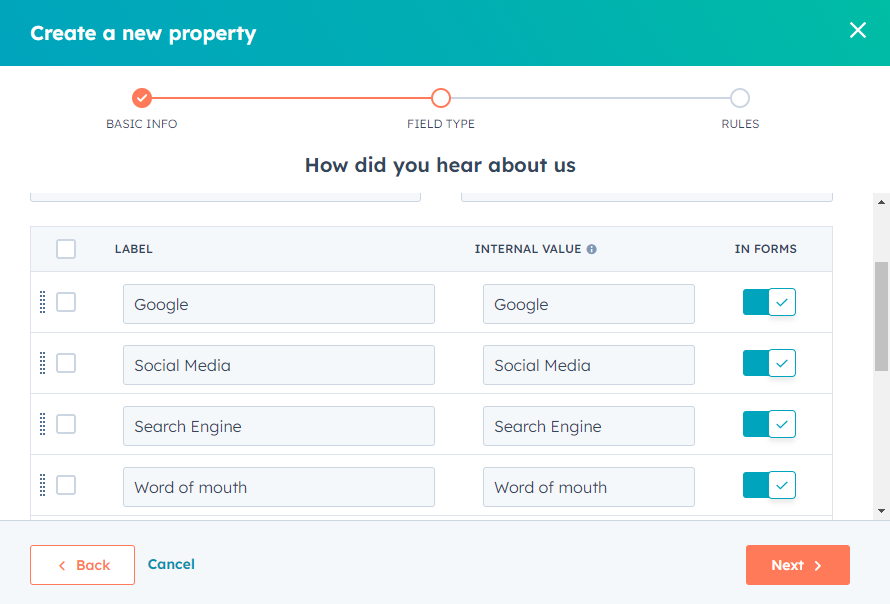
2. Follow through by generating a new property:

3. Create a contact details list in a column format for the respondent:

4. Consequently, group your contacts into categories based on similarities in response:
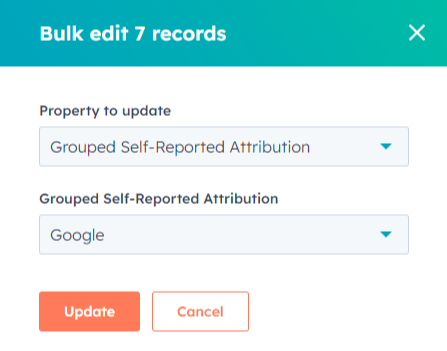
5. Finally, present your qualitative data visually:

Even if you are not actively promoting your brand on social media or through podcasts, customer reports indicate that they learn about you through word-of-mouth, community discussions, and social interactions.
How to Automate Your Grouping
Data obtained from dark social can be overwhelming at the best of times, not to mention difficult to analyze/use if not categorized correctly. To streamline attribution grouping, first make sure you have a clear understanding of how to categorize your attributions.
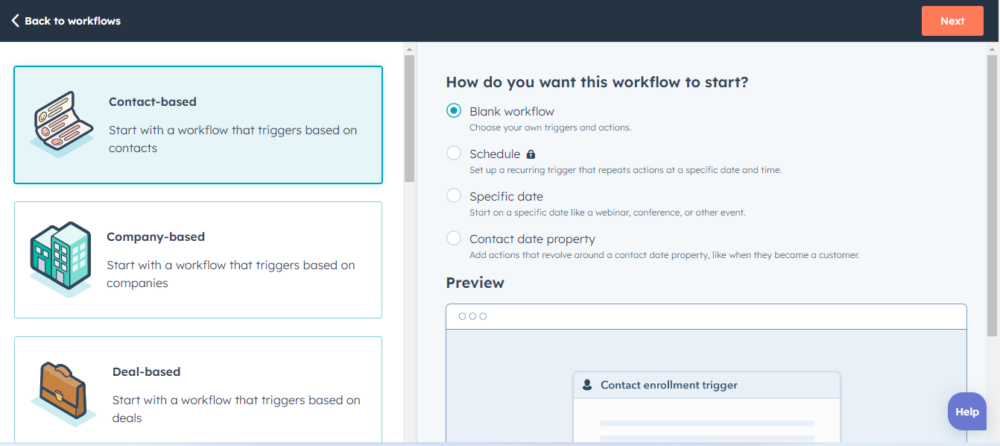
Secondly, ensure your marketing automation and CRM platforms are integrated.

Within the CRM, set up custom fields in the lead, contact, and opportunity modules.
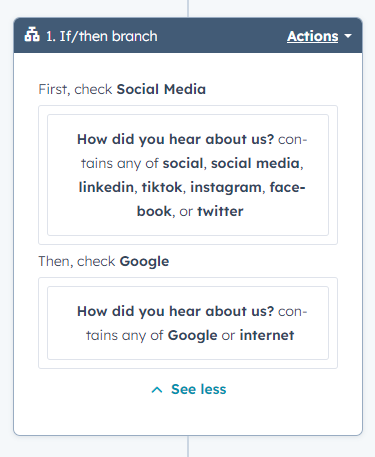
Finally, create a form that mirrors these fields, ensuring a seamless mapping between them for accurate attribution tracking.
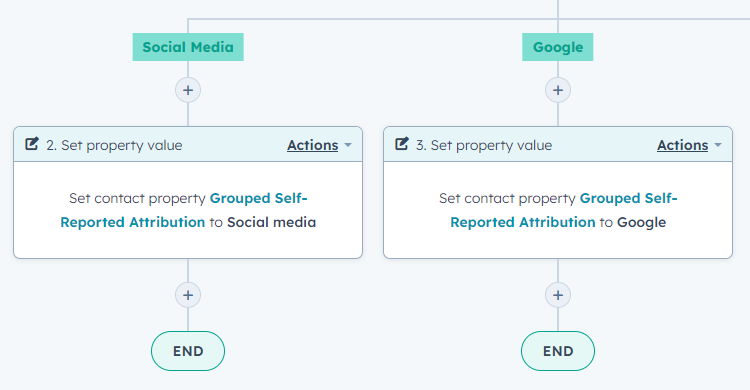
For automation, utilize marketing automation tools like HubSpot’s professional plans. Create a workflow with triggers based on the ‘How did you hear about us?’ property, and create “if/then” branches corresponding to your ‘Grouped Self-Reported Attribution’ categories. Once everything is configured, publish the workflow to start automating the grouping process.

A Real-World Success Story
Cognism, a prominent B2B company, has effectively adopted a novel approach led by its CMO, Alice de Courcy. When Alice joined Cognism, the primary marketing focus was on events. However, she ended up spearheading a strategic shift from “lead” generation to “demand” generation. This transition emphasized a move from easily measurable and tracked marketing channels to those where actual buying decisions take place. Particularly, the focus was within the dark funnel and dark social arenas, which consequently reflected the evolving focus of the company.
The transformation at Cognism, under Alice’s capable leadership, is nothing short of impressive. It represents a noteworthy example of a B2B company realigning its marketing strategy by targeting channels that influence purchasing decisions in the modern landscape through dark social and the dark funnel. The high point of this business model shift is expressed in the significance of adopting effective engagements with buyers throughout their journey.
The Legal and Ethical Side of Dark Social
The practice of dark social signifies that data isn’t tracked by attribution software, either due to platform privacy policy restrictions or the inherent privacy of word-of-mouth interactions on private messaging apps. Obtaining this data at the individual or account level would require privacy violations. Dark social marketing for B2B companies thus introduces a multifaceted landscape with intricate legal and ethical implications.
The unstructured and implicit nature of dark social sharing poses multiple risks, namely data leakage. Compliance with evolving privacy laws, particularly the GDPR, is paramount. Ethical considerations will require companies to respect confidentiality and maintain trust. In addition, the involvement of third-party companies during data collection calls for due diligence to ensure compliance with privacy laws.
To prevent data breaches with the potential to cause legal and reputational consequences, B2B companies must explore robust data security measures. It’s crucial to establish comprehensive record-keeping and audit trails for transparency and accountability. It’s complex to be sure, but B2B companies must navigate these intricacies if they want to unlock the potential of dark social while still upholding ethical standards.
Conclusion
Dark social is more than just a buzzword. It’s a powerful tool for B2B marketers looking to uncover hidden opportunities in demand generation. By understanding and embracing the nuances of dark social, B2B companies can tap into these private channels, gain deeper audience insights, and drive more effective marketing strategies. In today’s digital age, ignoring dark social isn’t a missed opportunity - it’s a risk. Marketers who demystify and leverage this hidden force will be well-positioned to lead their brands to success.













